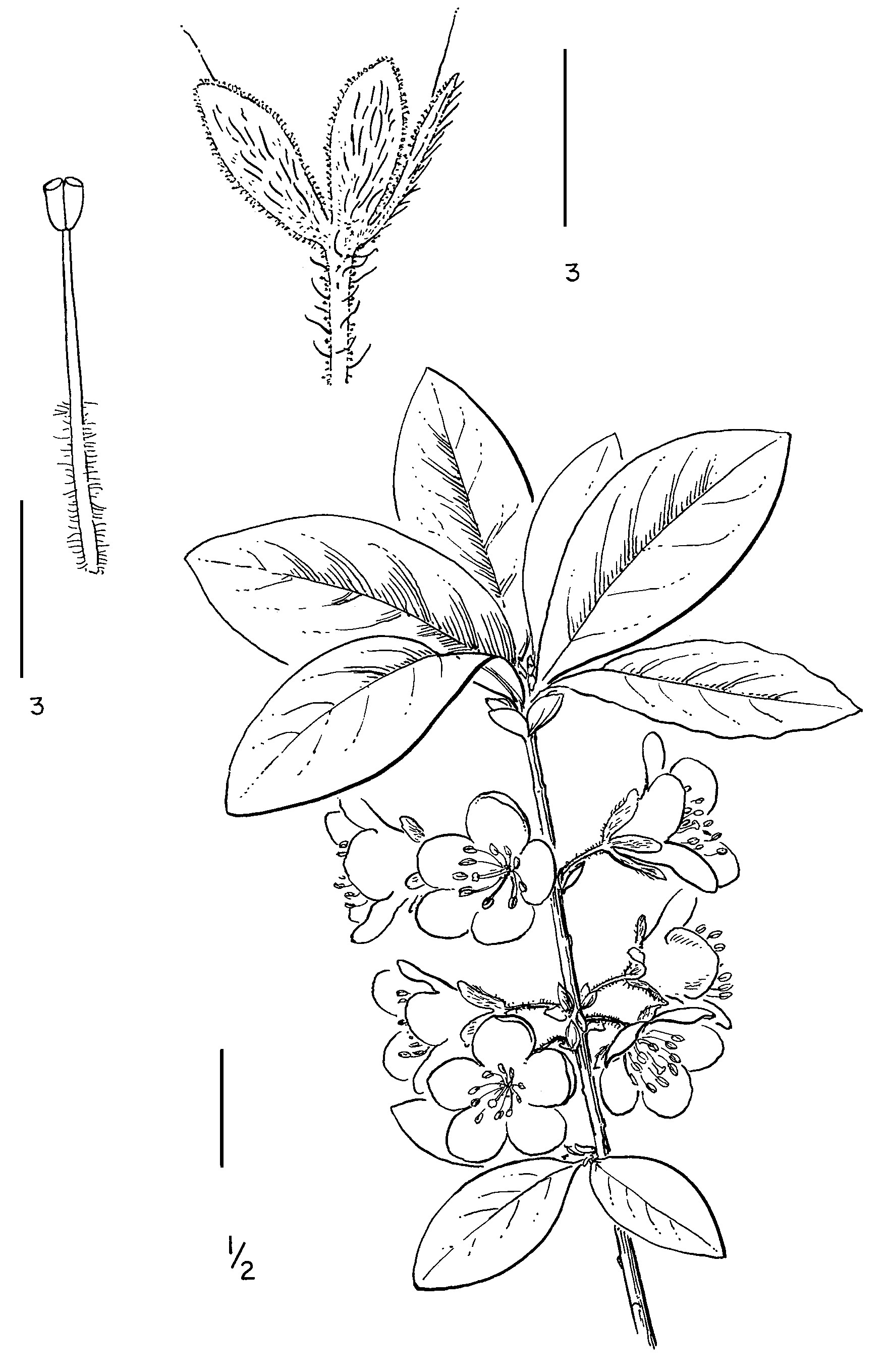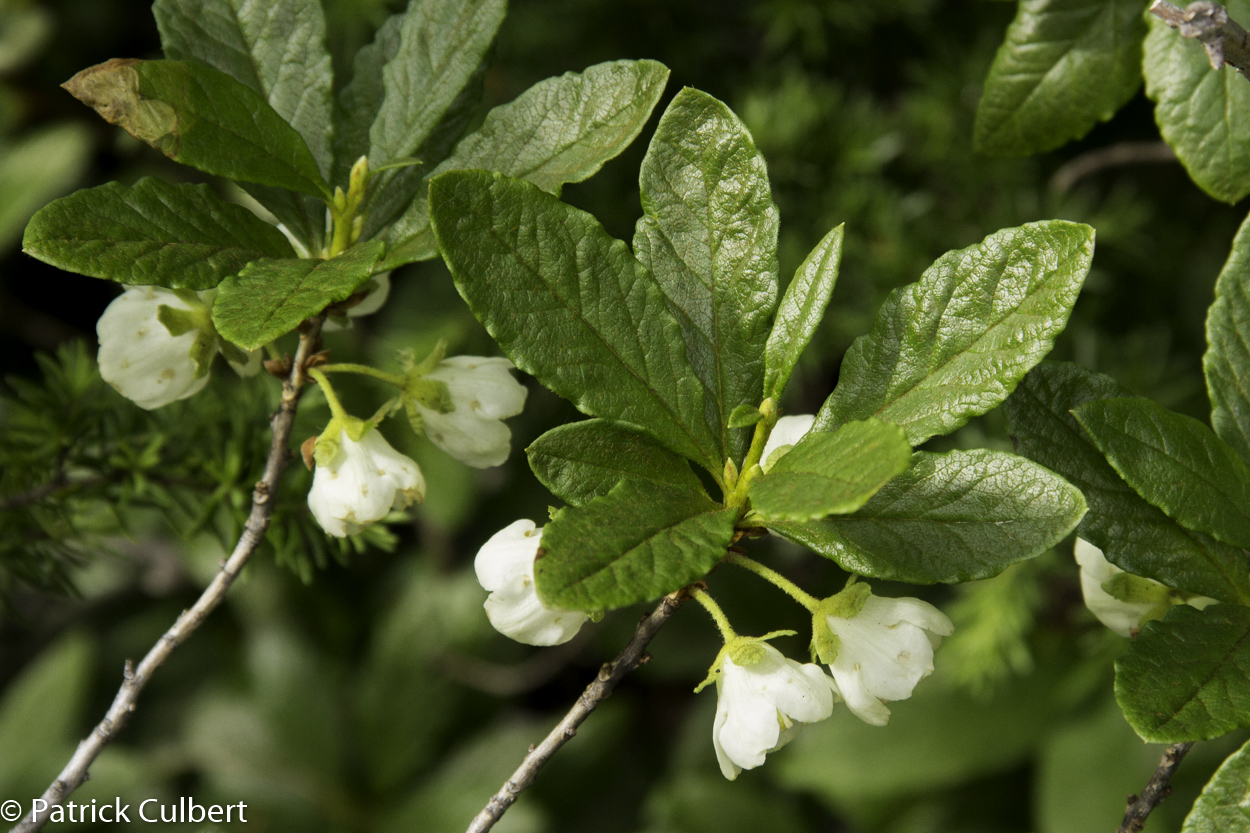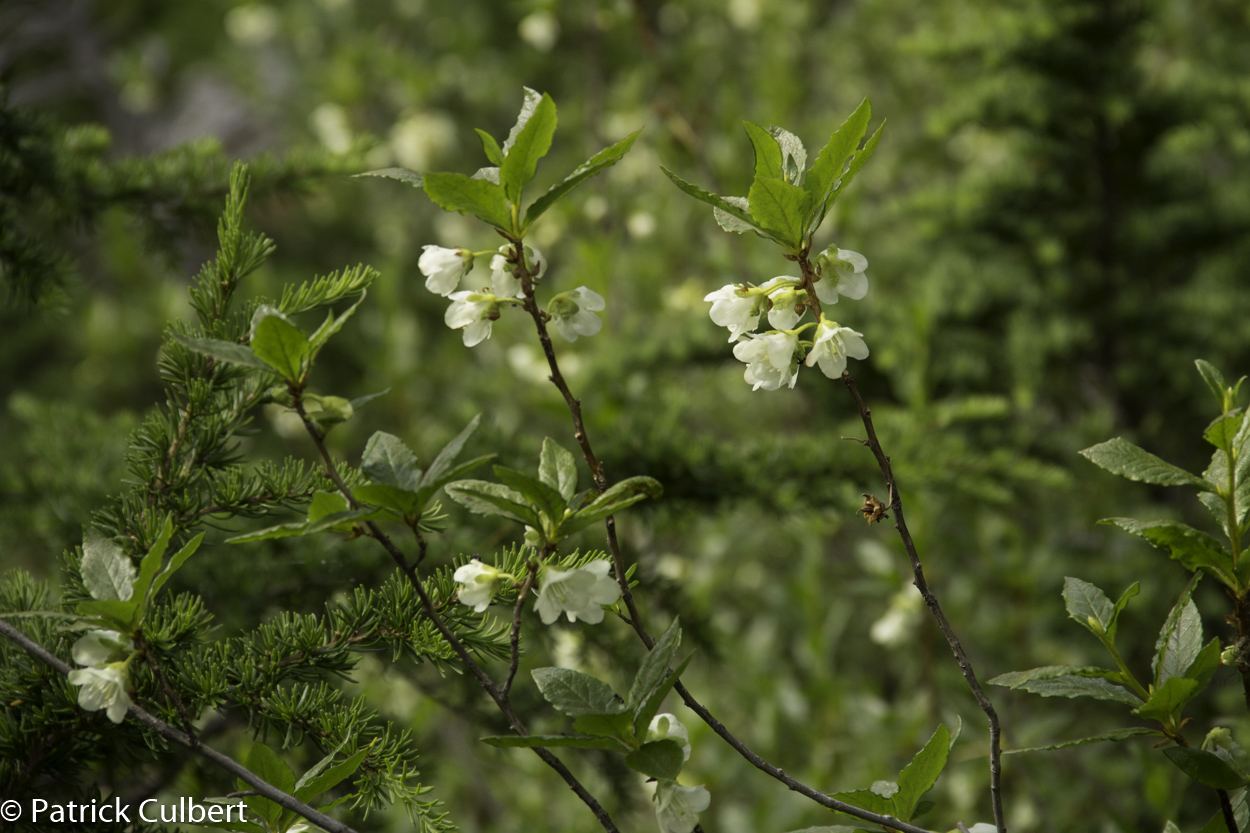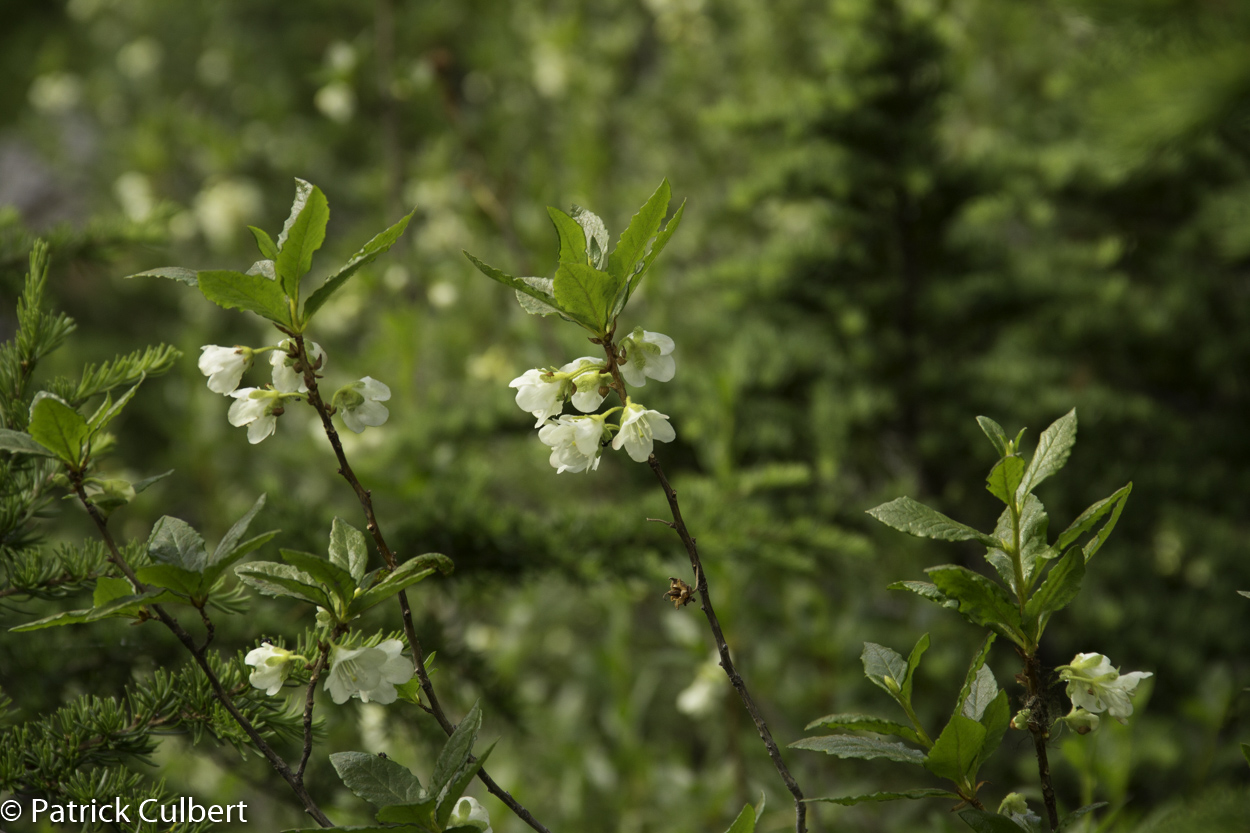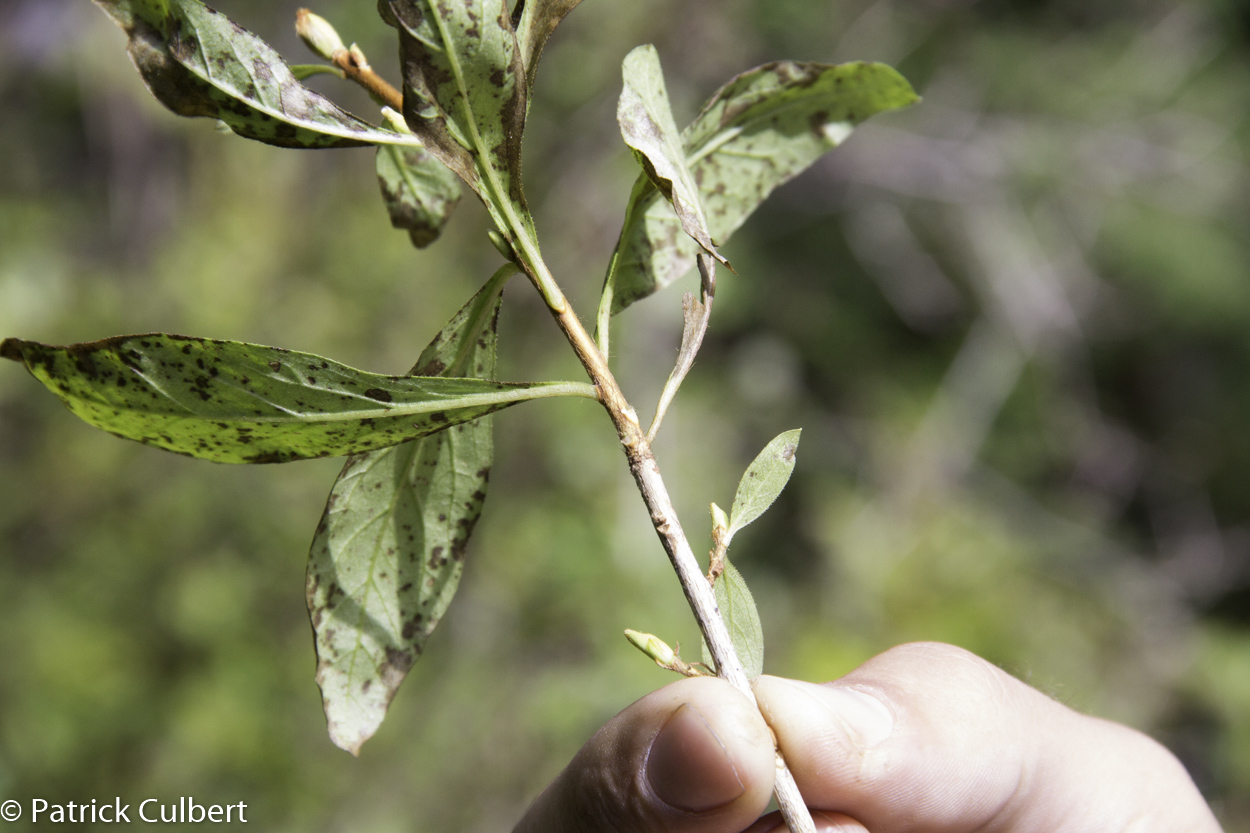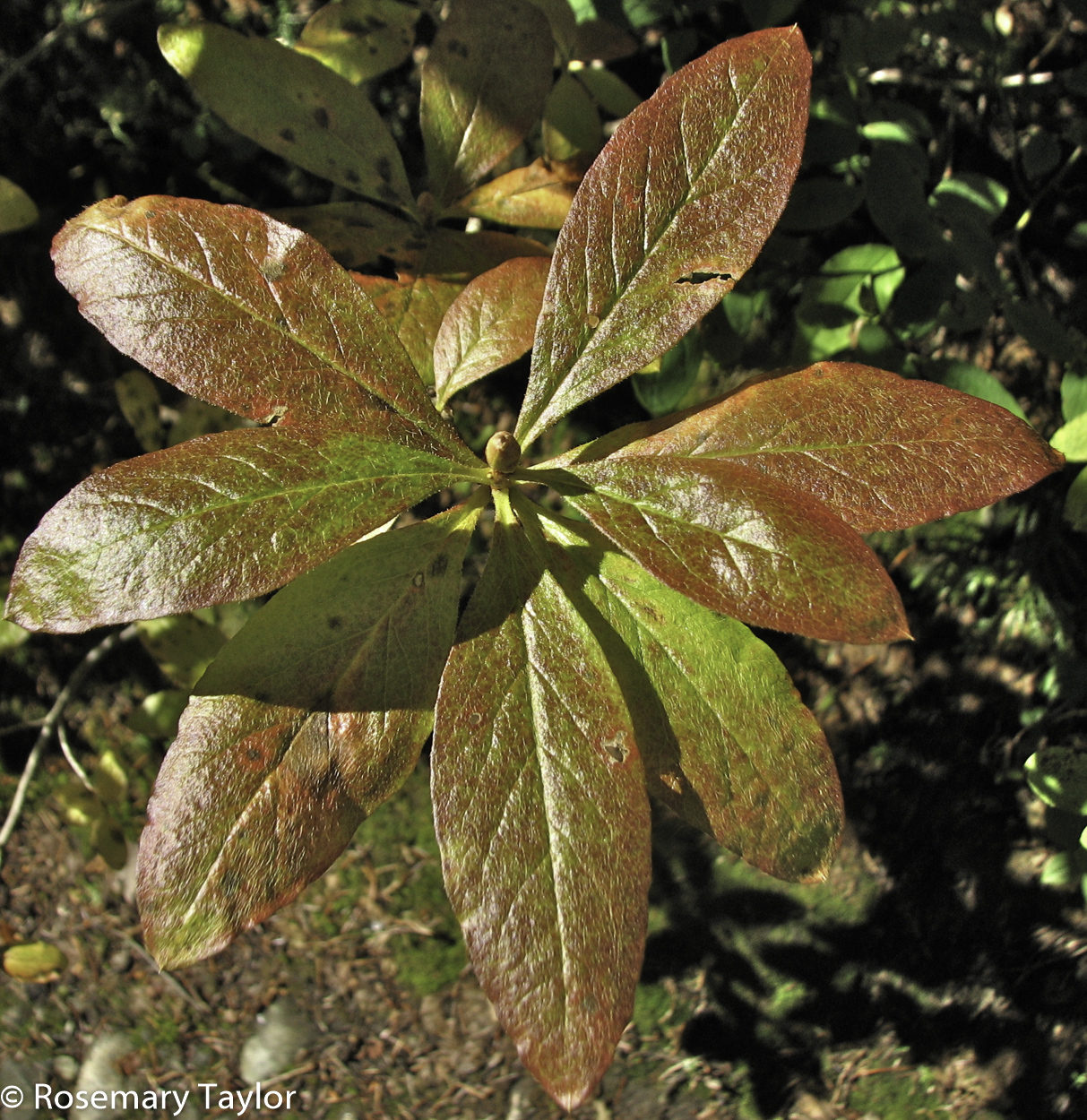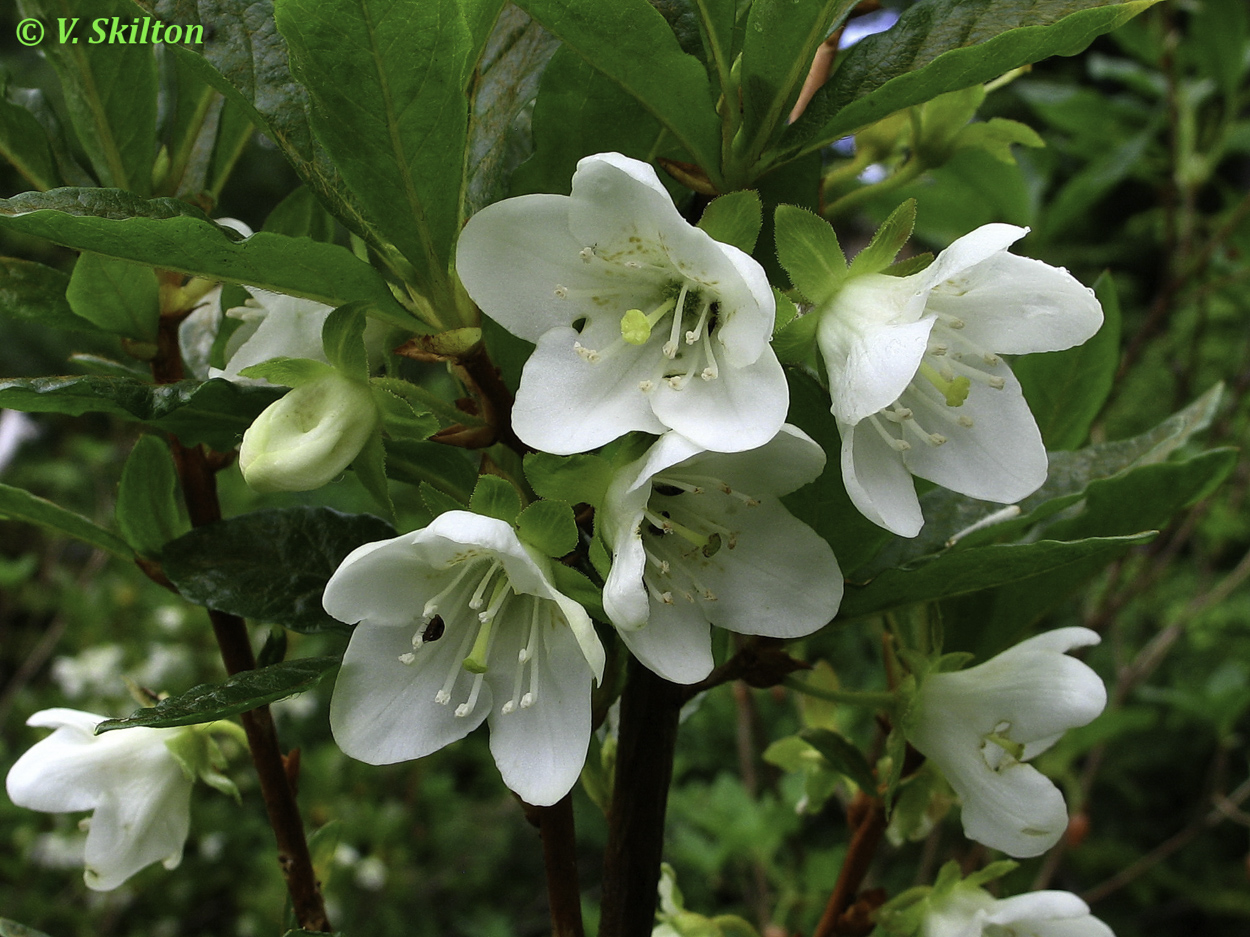Rhododendron albiflorum – white flowered rhododendron
Common Name
white flowered rhododendron
Alternate Common Names
- Cascade azalea;
- white rhododendron
Family
Ericaceae
Scientific Name
Rhododendron albiflorum
Soil Moisture Regime (SMR)
- Moderately Dry (MD)
- Medium (M)
Soil Nutrient Regime (SNR)
- Poor (P)
Video link
Hitchcock, C. Leo, and Arthur Cronquist. Flora of the Pacific Northwest: An Illustrated Manual © 1973. Reprinted with permission of the University of Washington Press.
General / Habitat
- A shrub
- Grows in moist forests and streambanks but also in relatively dry, exposed sites
- Common at subalpine elevations
Key Identifying Characteristics
- Form: Erect, 1-2.5 m tall, young twigs covered in reddish hairs
- Leaves: Alternate but growing in whorl-like clusters mostly at branch tips, elliptic and pointed, upper surface with fine rusty hairs, yellowish green, turning bronze in the fall
- Flowers: white, showy, cup-shaped, petals fused at base, in clusters of 2-4 on old growth
- Fruit: Dry capsules containing seeds
Lookalikes
- When non-reproductive, can be easily confused with false azalea (Menziesia ferruginea) or copperbush (Cladothamnus pyroliflorus)
- former has sticky, bluish leaves with whitish hairs on both sides, smells skunky when crushed, and has a midvein protruding at the tip of the leaf
- latter has powdery, hairless leaves that are broadest near the tip
Interesting Characteristics
- The leaves were used for medicinal teas or poultices by some aboriginal groups in our region
Co-occurring Species
External References
Sources
Douglas, G.W. et al (Editors). 1998-2002. Illustrated Flora of British Columbia, Volumes 1 to 8. B.C. Min. Environ., Lands and Parks, and B.C. Min. For., Victoria, B.C.
Pojar, J. and A. MacKinnon. 2014. Plants of Coastal British Columbia Including Washington, Oregon & Alaska. B.C. Ministry of Forestry and Lone Pine Publishing. Vancouver, B.C.

